1. Background: Fatal accident caused by high-speed collision
– Time: Around 22:44 on March 29
– Location: Tongling Congyang Expressway, China
– Vehicle involved: Xiaomi SU7 standard version (price around 30,000 USD)
– Casualties: 3 female fatalities (all seniors, planning to take the civil service exam the next day)
Photos of the scene show the vehicle completely burned. According to hospital and funeral home records, the accident killed the two people in the front seat instantly, and the third injured person died after being taken to the hospital. The specific cause of the accident is still under official investigation.
2. Vehicle ownership and family members’ doubts
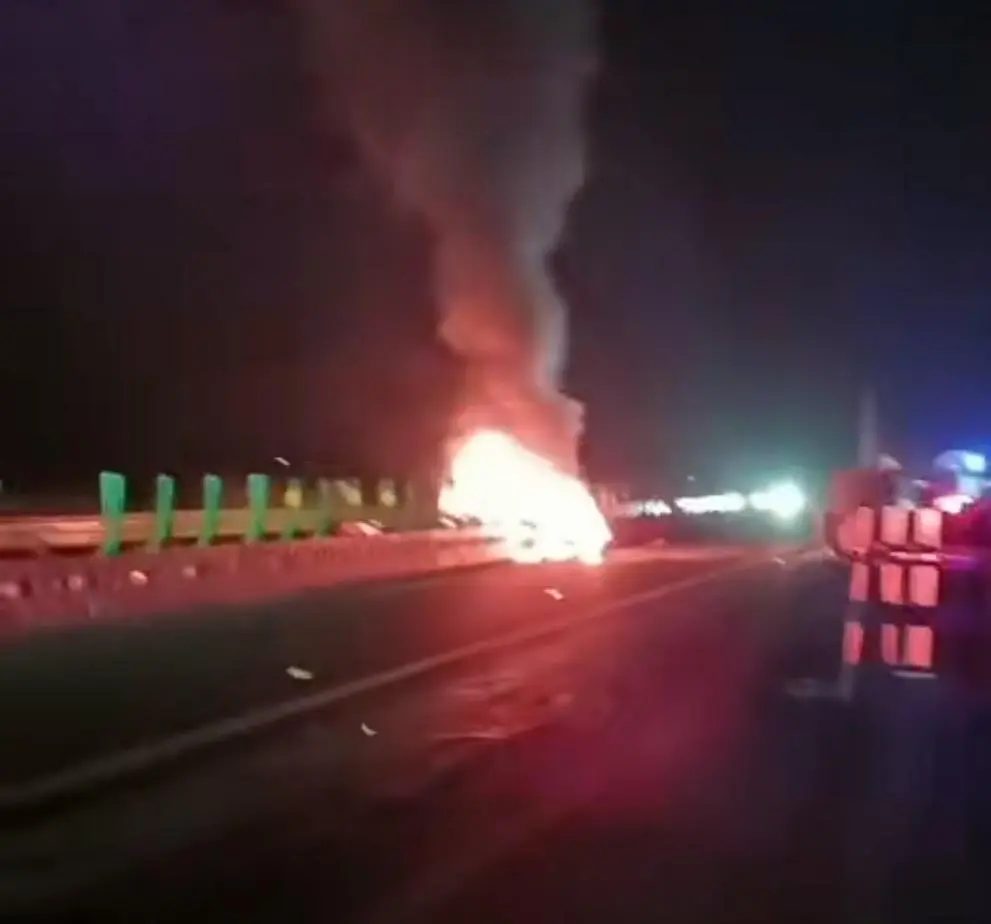
According to the statements of netizens claiming to be family members:
• The vehicle was registered in the name of the victim’s boyfriend (students are unable to apply for loans)
• The main points of contention for the family:
– Why did it spontaneously combust after colliding with the guardrail?
– Did the doors automatically lock during the accident?
– Requested direct communication with Xiaomi (claiming not to have received any contact)
3. Two key official Xiaomi responses
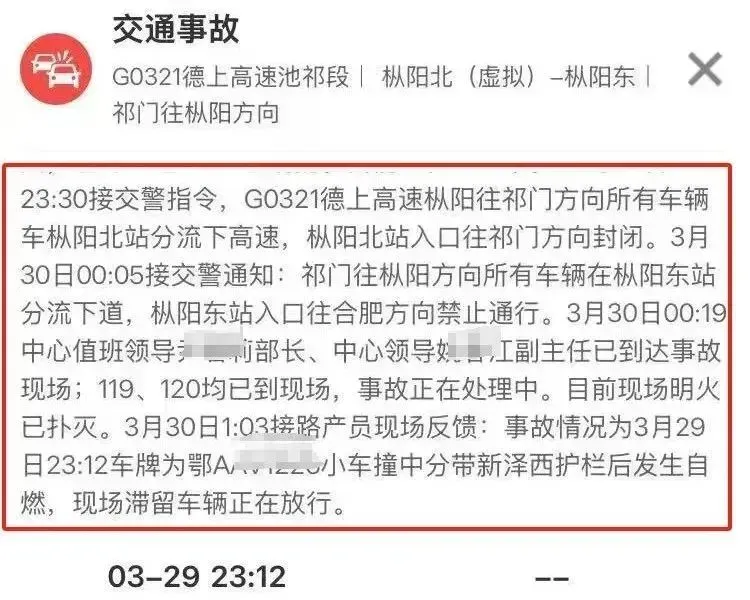
(March 31st, first statement)
• A special investigation team was set up and rushed to the scene
• Promised to cooperate with the police investigation and publish the results
• No specific technical details were mentioned
(April 1st detailed technical description)
• Model confirmed: SU7 standard version
• System status during the accident:
– NOA intelligent assisted driving was used before the collision (set speed of 116km/h)
– Roadblocks were set up for temporary diversion of the construction site
– The system detected an obstacle and started to slow down
• Key time points:
22:44:24 The system issues an obstacle warning and begins to slow down
22:44:25 The driver takes over control (steering wheel turns 22 degrees to the left, brake pedal 31%)
22:44:26 The steering wheel turns 1 degree to the right, brake pedal 38
22:44:26-28 The vehicle hits a concrete guardrail
• Collision speed confirmed: about 97km/h
4. Analysis of technical issues

4.1 Warning response time
• The system issued a warning 2 seconds before the collision (a braking distance of about 62 meters at a speed of 116km/h)
• The average reaction time of a human driver is 0.8-1.5 seconds
4.2 Braking system performance
• The braking force after taking over was not at the maximum (31%→38% pedal opening)
• The collision speed far exceeded the conventional safety threshold (usually less than 60km/h is required)
4.3 Safety system questions
• Is AEB automatic emergency braking activated? (officially not clearly stated)
• The effectiveness of the battery power-off mechanism is in doubt (officially claimed to cut off the current in 4ms)
4.4 Version configuration differences
• Standard version hardware configuration:
– 1 millimeter wave radar
– single Orin chip (84 TOPS computing power)
– no lidar
• High-end version comparison:
– 3 millimeter wave radars + 1 lidar
– dual Orin chips (508 TOPS computing power)
– theoretically has stronger environmental awareness
5. Information confirmed by multiple agencies
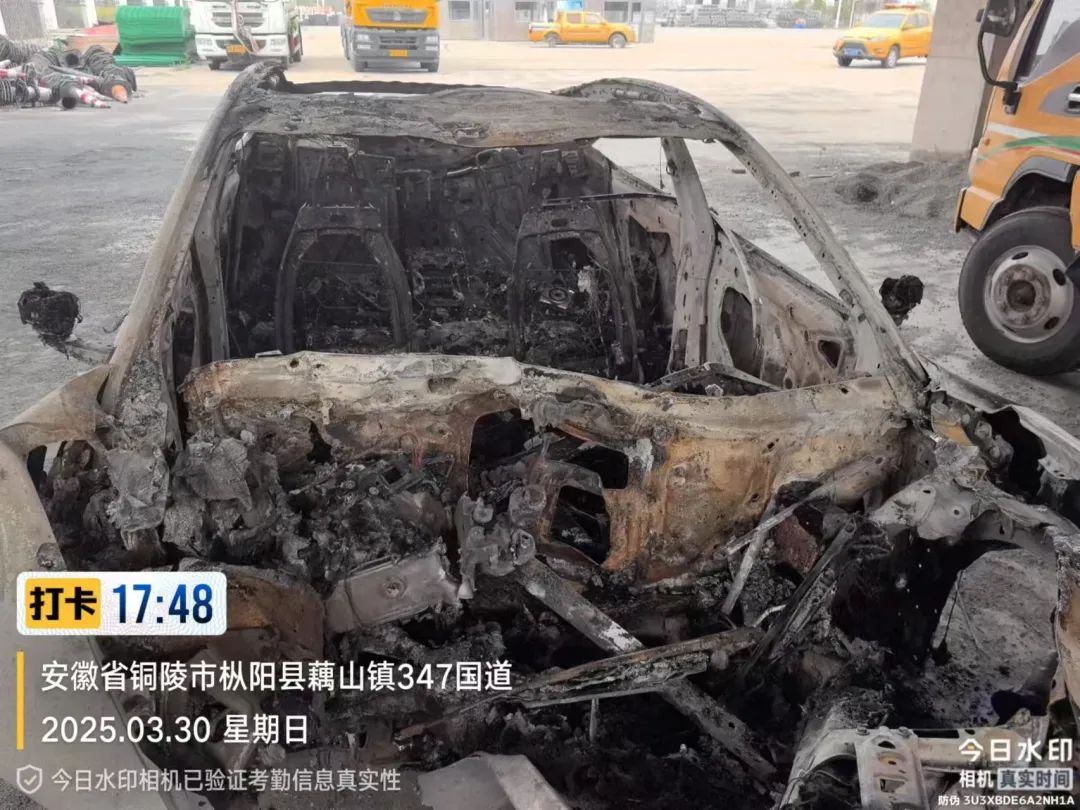
• Road management department:
– The road section where the accident occurred was temporarily closed due to construction, and the original lane was closed
– Roadblocks were set up to guide vehicles into the opposite lane
• Medical authorities:
– Confirmed that the extent of the burns caused some of the remains to be unidentifiable
• Traffic management department:
– The accident investigation is still ongoing
– No report on the determination of responsibility has been released
6. Market reaction and industry impact
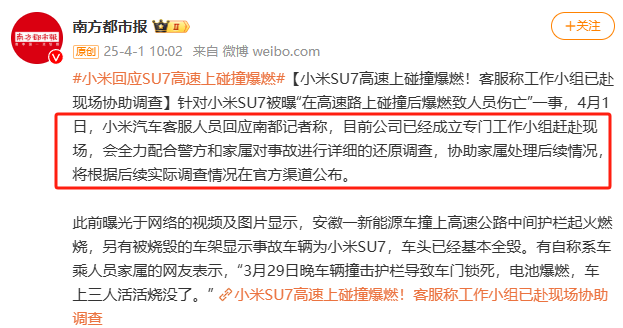
• Stock price fluctuations:
– The next day after the accident, Xiaomi’s Hong Kong stock price fell 5.49
– Market value evaporated by about 7 billion US dollars
• Public opinion concerns:
– Company CEO Lei Jun suspended daily social media updates
– Consumer discussion on the safety of intelligent driving surged
• Industry standard discussions:
– Limitations of sensor performance in nighttime environments
– Need to optimize the process of handover between human and machine driving
7. List of existing core questions
① Why did there be a violent combustion after the collision?
② Did the emergency unlocking mechanism of the car door fail?
③ Did the AEB system operate normally?
④ Actual response time of the battery management system?
⑤ Is there a blind spot for sensors in nighttime environments?
⑥ Timeliness of navigation data updates for construction zones?
8. Follow-up points of attention
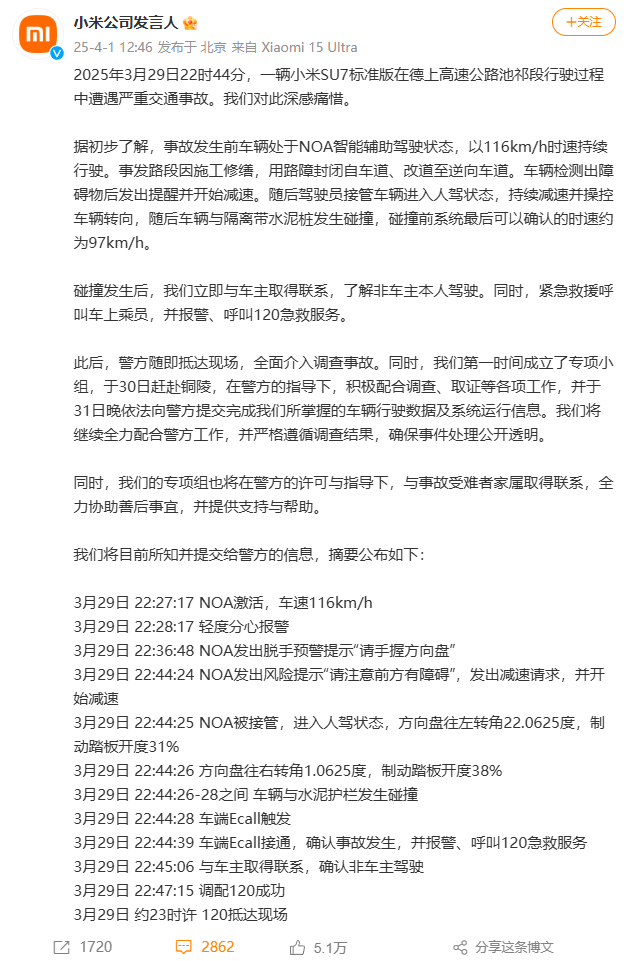
• Release time of the official accident report
• Involvement of third-party testing organizations
• Verification of the integrity of vehicle data records
• Progress of communication between family members and the company
• Possibility of revising industry safety standards
(This article is being continuously updated, so we recommend bookmarking it to follow the latest developments. We remind all drivers that they must maintain full control of the vehicle, whether or not they are using an assisted driving system. Manual driving is recommended in complex road conditions to ensure driving safety.)
